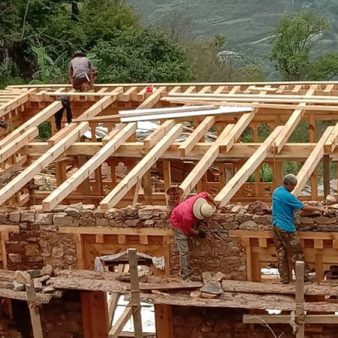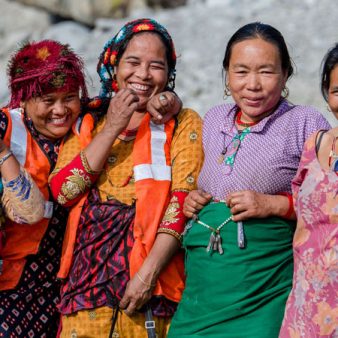The Dandora dumpsite is the largest informal landfill site in East Africa, stretching out over 30 acres in the eastern part of the Kenyan capital, Nairobi. It was declared full in 2001 and yet dumping continues unrestricted with more hazardous industrial, agricultural and even medical waste arriving each day.
The dump takes a heavy toll on the lives of residents in the surrounding low-income neighbourhoods, which have been largely unregulated for decades and have fallen into disrepair. People living in these neighbourhoods, called ‘Phases’, have a much higher incidence of health problems due to pollution from the landfill site. Crime is also a major problem because the dump is the source of an informal scavenging economy, which is run by criminal gangs.
Life in the Phase 2 area of Dandora, however, is improving for residents thanks to a project aiming to alleviate the tough living conditions and overhaul the neighbourhood’s negative reputation. The Model Street initiative united the community to transform the physical appearance of a street in Phase 2, improving sanitation and increasing safety.
The initiative formed part of the Making Cities Together project – a collaboration involving 40 partners including Placemakers Netherlands, the International New Town Institute and design agency KUWA, which works to improve the lives of Kenya’s urban poor. It is hoped the initiative will encourage further improvement work throughout the entire neighbourhood and beyond.
Model Street was one of three initiatives developed during Placemaking Labs – sessions which bring together international and local experts with community-based organisations to form ideas on how to improve Nairobi’s public spaces. The focus of the Model Street initiative was to make big changes through small actions and it was based on an existing competition organised by community group, the Dandora Transformation League.
Each year the Dandora Transformation League encourages youth groups representing individual courtyards (clustered blocks of apartments) to compete for prize money if they successfully upgrade their public spaces. This approach has proved successful and has led to sustainable employment for young people who are paid to maintain and clean the shared spaces in their courtyards.
Building the Model Street
Work on the Model Street began in 2015 and it was a process that required a high level of collaboration between the Making Cities Together partners and the community.
To gauge the residents’ vision of the Model Street, organisers ran four workshops using Minecraft gaming software. These innovative sessions enabled a selection of 26 Dandora residents – each representing different ages, genders, abilities and socio-economic groups – to reimagine the space together and encouraged them to think creatively. The Minecraft workshops proved to be a highly effective way for residents to express their needs and helped project organisers visualise and understand what they were being told.
Once the project was underway, weekend ‘Building Parties’ were organised by the Dandora Transformation League to bring community leaders and volunteers together to help with the work. The project focused on inclusion and women not actively involved in building were encouraged to make flags to section off the streets during the parties. The process was designed to motivate and involve young people in particular, and teenagers were encouraged to help paint.
Larger-scale work requiring additional technical support was implemented with the help of the Making Cities Together partners, which funded the USD$143,500 cost of the whole project.
Improvement work included paving the road, clearing rubbish and drains, the creation of courtyards and children’s play areas, painting building facades, the installation of rubbish bins and business kiosks along the paved street, and the planting of trees. New gates leading into the Phase 2 neighbourhood were constructed based on ideas formed during the Minecraft workshops.
Social and environmental impact
The Model Street project has greatly improved living conditions for Phase 2 residents and had a positive impact on their health and safety, which has led to an increased sense of empowerment and influence for this marginalised community.
Unblocking drains has helped to prevent flooding and reduced the risk of waterborne diseases spreading through the neighbourhood, while greater maintenance and management of the area’s common spaces has improved general cleanliness. Community involvement has encouraged more residents to paint and fix up their own houses, adding to the aesthetic transformation of the area.
Residents say they feel safer due to better lighting and community policing, while a survey of local shop owners revealed business is increasing because it is now safe to stay open later. New businesses have also opened, including one that rents out skates and bikes to children so they can play on the newly paved street. The project has also provided sustainable employment for around 10 young people, who are paid by business owners to clean the street every week.
Project organisers were keen to address Dandora’s reputation for pollution, so trees were planted as part of the process of creating a cleaner, greener space for residents. Architects working on the new gateways into the Model Street were careful to select building materials according to their local availability as well as their resilience.
Materials from the dumpsite were also incorporated into the Model Street design – swings for the children’s play area were made from recycled tyres, while rubbish bins were fashioned from salvaged metal. There are plans to introduce recycling techniques developed in the Netherlands so the community can benefit from more of the materials found in the dump.
The future
Model Street launched in April 2018 and its success is influencing activity at both grassroots and policy level. There are plans to install additional street lighting in Phase 2 as well as to continue painting and to implement a local maintenance plan. In neighbouring Phase 4, residents have been inspired to carry out similar improvement projects of their own.
Together with other organisations, the Dandora Transformation League has launched the Public Space Network – a public-private-people partnership set up to improve public spaces across Nairobi – and has secured further funding in 2018 from UN-Habitat to build on current work. Placemaking Week – a new annual event led by KUWA and to be managed by Public Space Network – will work to promote and improve Nairobi’s public spaces through low-cost high-impact interventions similar to those used in the Model Street project.
The Making Cities Together partnership is considering its next move and this may include work to deliver the other two initiatives conceived during the Placemaking Labs. Meanwhile, the partnership’s audit of more than 1,000 public spaces has led to a commitment by Nairobi City County to develop a Public Open Spaces Bill, which seeks to protect and improve these spaces for public use and promote shared responsibility for their maintenance.
While the outcome of the Bill remains to be seen, one thing is certain: Model Street is helping to change Dandora’s notorious reputation for crime and pollution to one of innovation, potential and inspiration for others across Nairobi, Kenya and beyond.
View the full project summary here – available in English only
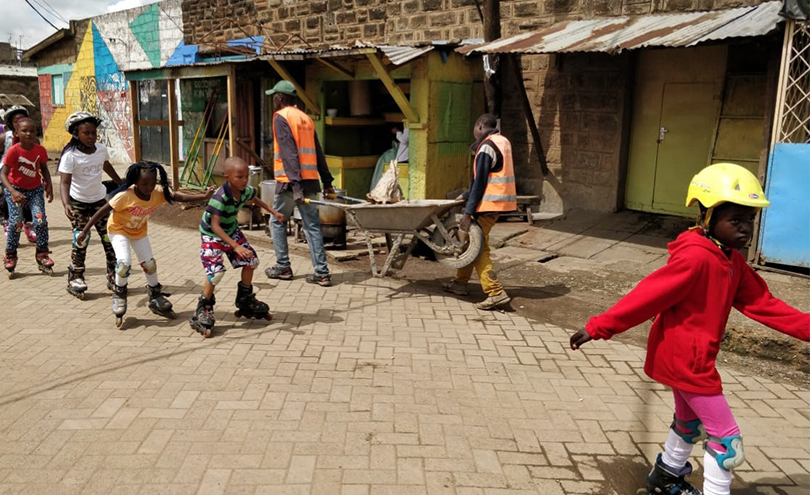
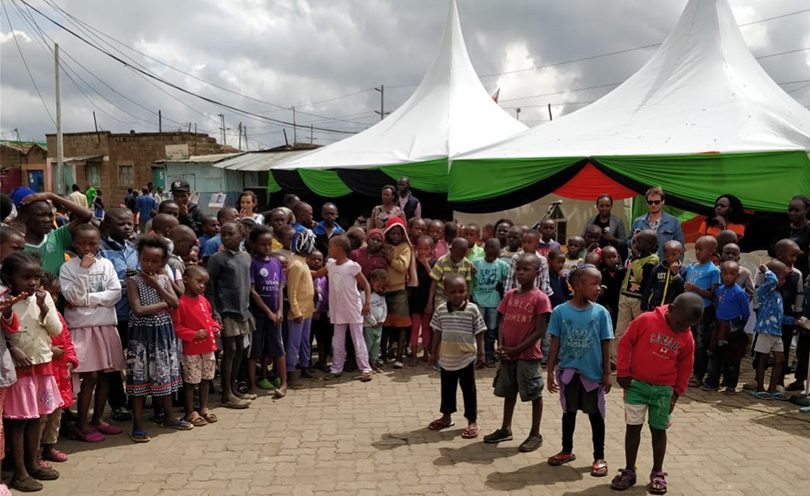
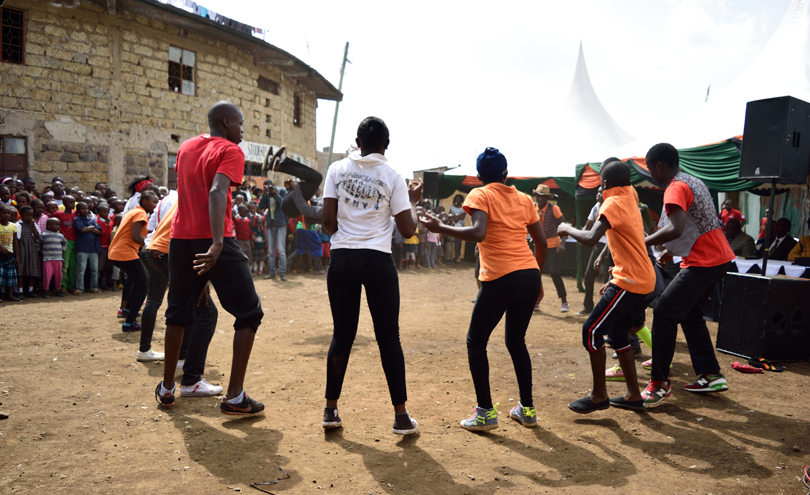
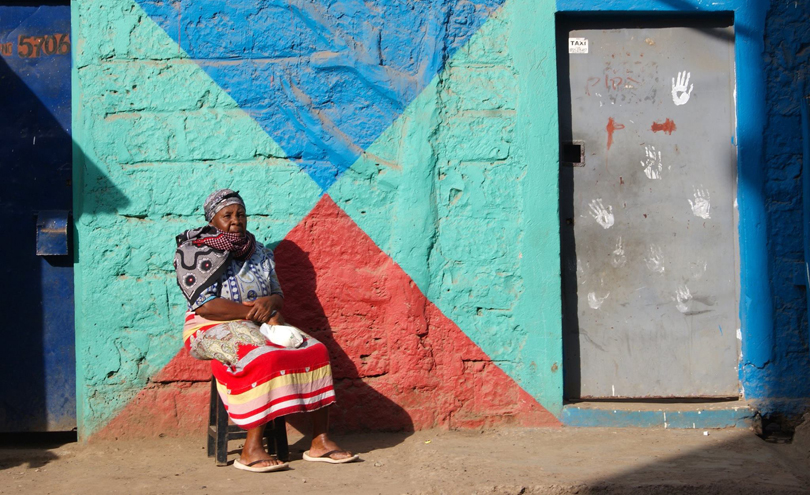
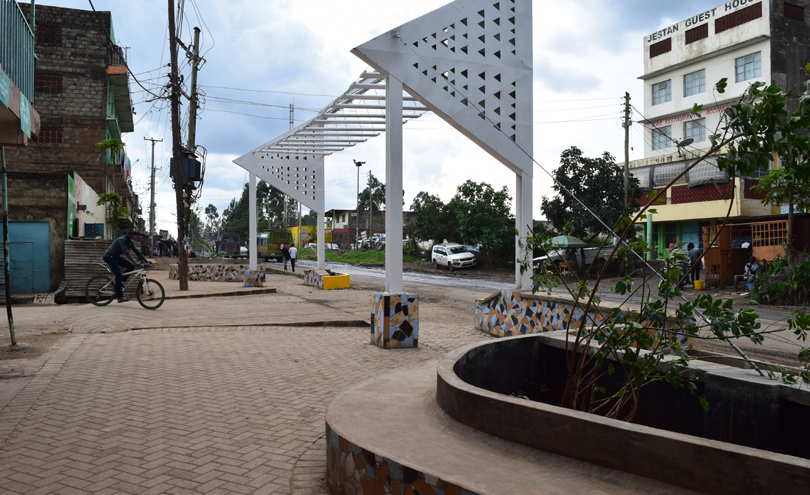
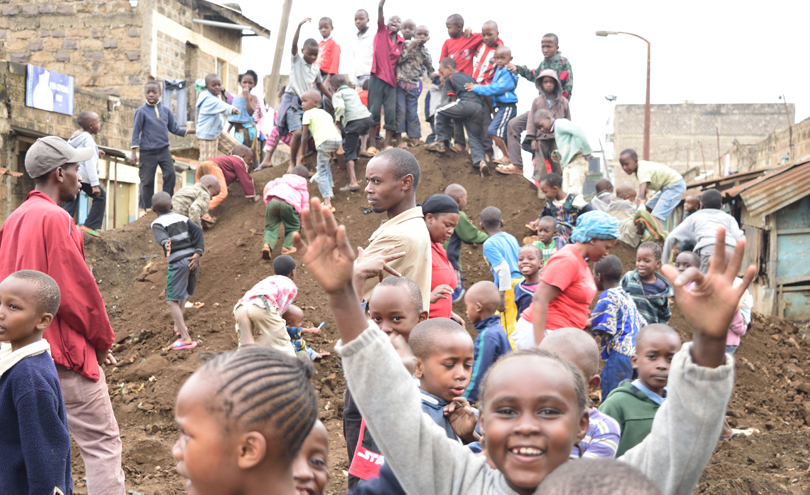
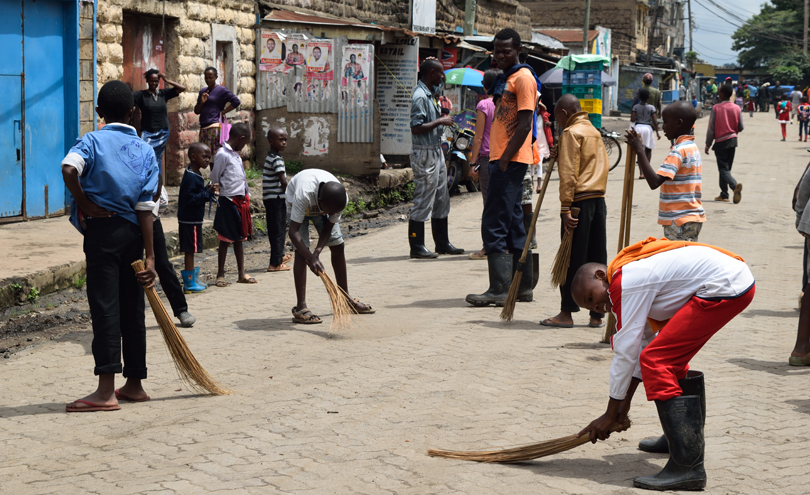
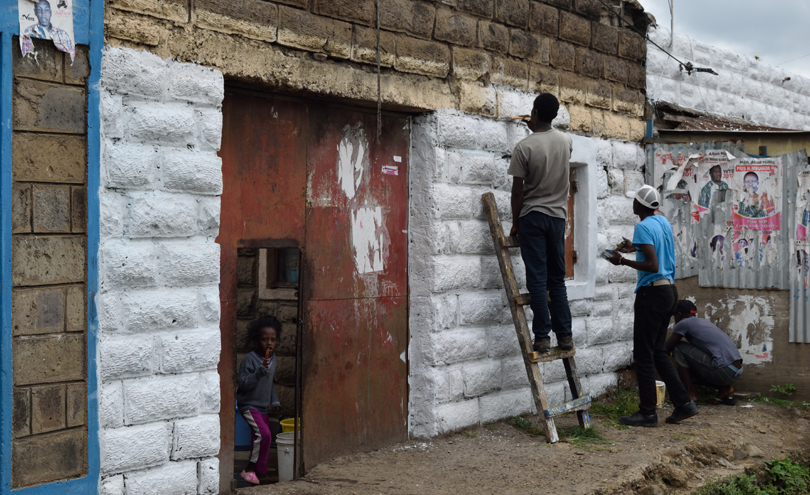
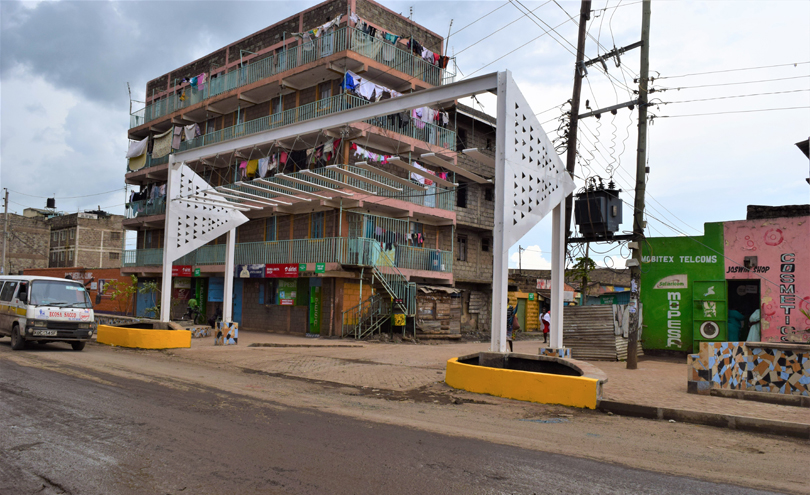
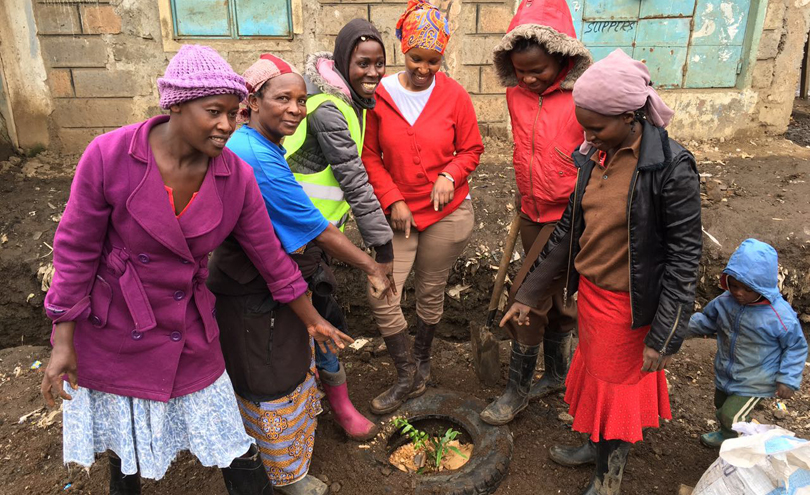

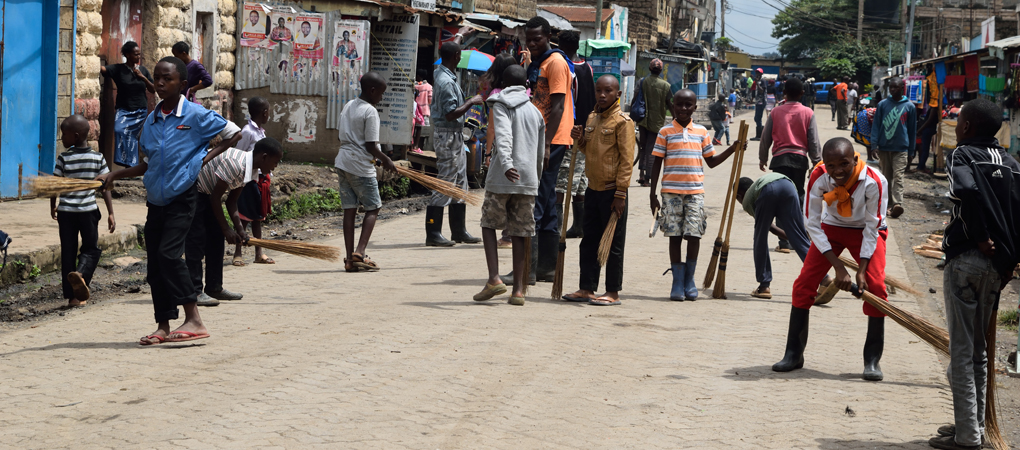
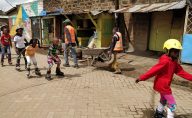
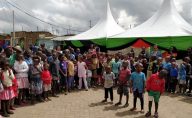
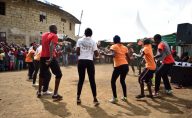
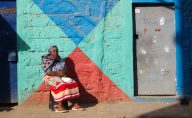
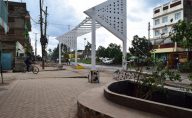
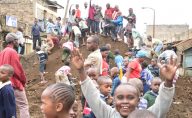
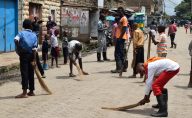
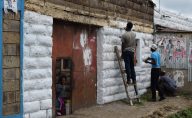
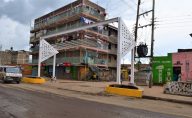
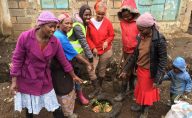
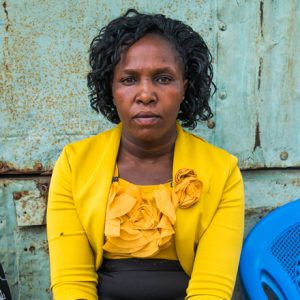 Christine Ndinda is a long-term resident of Dandora phase 2 – she has lived in the community for over 12 years with her children.
Christine Ndinda is a long-term resident of Dandora phase 2 – she has lived in the community for over 12 years with her children.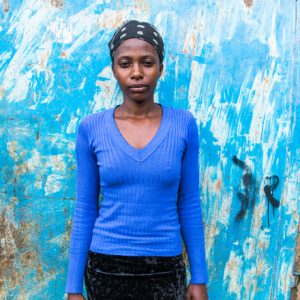 Ireen is a 24-year-old who was born and raised in Dandora phase 2. She now works on the street to ensure its cleanliness and safety whilst being paid by the business owners.
Ireen is a 24-year-old who was born and raised in Dandora phase 2. She now works on the street to ensure its cleanliness and safety whilst being paid by the business owners.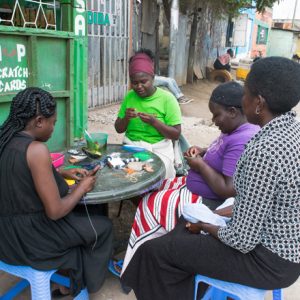 Loreen, Catherine, Judy and Nancy (left-right) are long-term business owners in the Dandora phase 2 street having lived and worked in Dandora for over ten years.
Loreen, Catherine, Judy and Nancy (left-right) are long-term business owners in the Dandora phase 2 street having lived and worked in Dandora for over ten years.